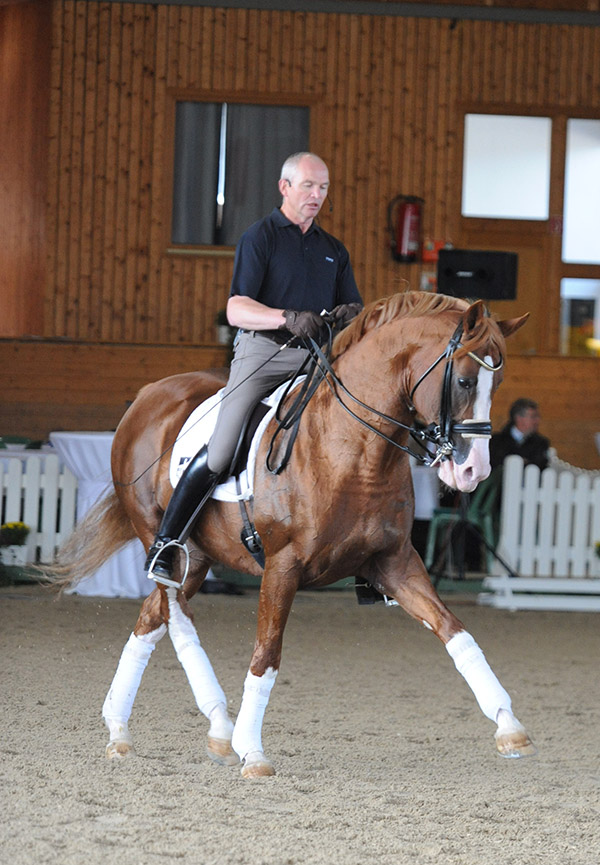
Hubertus Schmidt – Piaffe and Passage
Story – Chris Hector Photos – Roz Neave
A seminar in Warendorf…
Hubertus Schmidt warms up the Dutch stallion. The 12 year old chestnut has competed Grand Prix, and Hubertus – once he gets him warmed up and used to the arena – is going to talk about piaffe and passage, and demonstrate while he talks.
“I start teaching piaffe when the horse is six years old, because they need to be physically strong. At seven the horse is doing Prix St Georges, and at eight, Grand Prix – that means you have two years to prepare piaffe. First teach piaffe, then passage. First the horse has to be really sitting and taking the weight on his hindquarters – it is easy with a talented horse to collect the trot and go to passage, but it is also easy to get the horse out behind.”
“We start with a swinging trot, collected and supple, moving through the whole body. For a good collected trot it is not just cadence – it is a good swinging. When I look at five year old horses, that’s what I ask – can I make the trot swing through the whole body.”
“In a balanced, collected trot, I ask for some half passes, this is the best way to be sure that the horse takes the outside rein, and is equally on both reins. 90% of uneven steps in piaffe come from the horse being too strong on one rein. For me, it is important that I can give the inside rein.”
“I start piaffe, mostly sitting on the horse although some I start in hand, always from collected walk and just playing, jogging in this walk. There are three really important things in piaffe. One is that the horse has to be always willing to go forward, the second is to play with how high, how low, the horse’s neck is. If you get them up, it is easier to start piaffe, but if you can get them lower, it is easier over their back. The other important thing is that the horse is sensitive to the legs and doesn’t need the whip.”
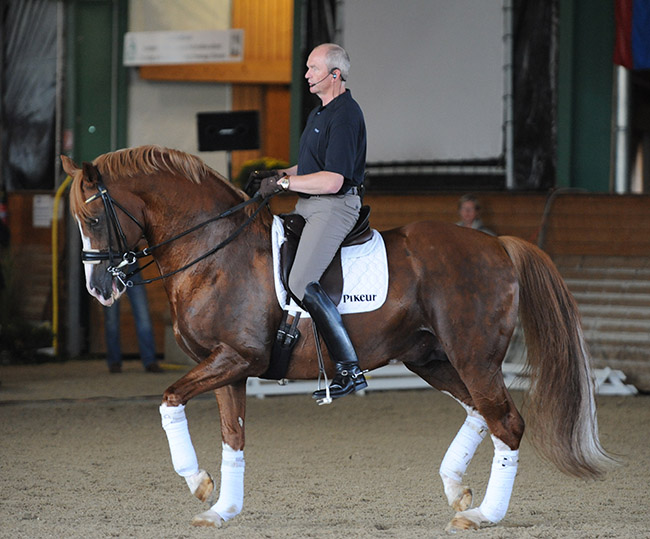
“In piaffe, always trot out so the horse keeps the forward. Be careful, sometimes they are uneven, shorter in one leg, and 90% of the time that is the result of not steady contact. So I do a turn in piaffe for two reasons, to the stiff side to loosen the inside rein, and also to get the horse to take weight on the inside leg. At home, I seldom do 15 piaffe steps on the spot, I do seven or eight, forward, a few more, forward.”
Time to move on to passage:
“It is easier from a swinging trot to get into passage. I’m happy with this passage, not everybody is Totilas! He is steady on both hands, regular behind – then always forward again. After we have done from trot to passage, the next step is from extended trot to passage. Especially for the young horses, I always like them going forward from the passage.”
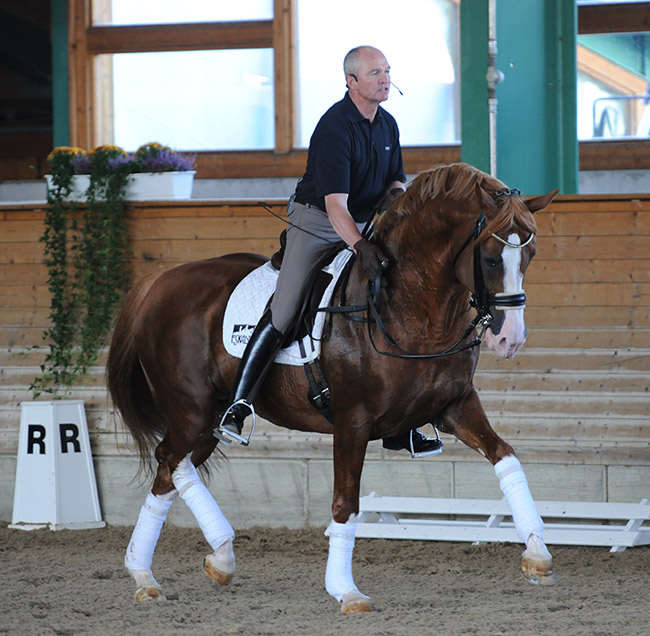
read on below
“It is very important to prepare piaffe in the passage. Make the passage more active, then sit quiet for the transition. The rhythm is slower in passage, quicker in piaffe, you must give the horse time to change the rhythm – often riders push too fast in the transitions.”
story continues below the advertisement
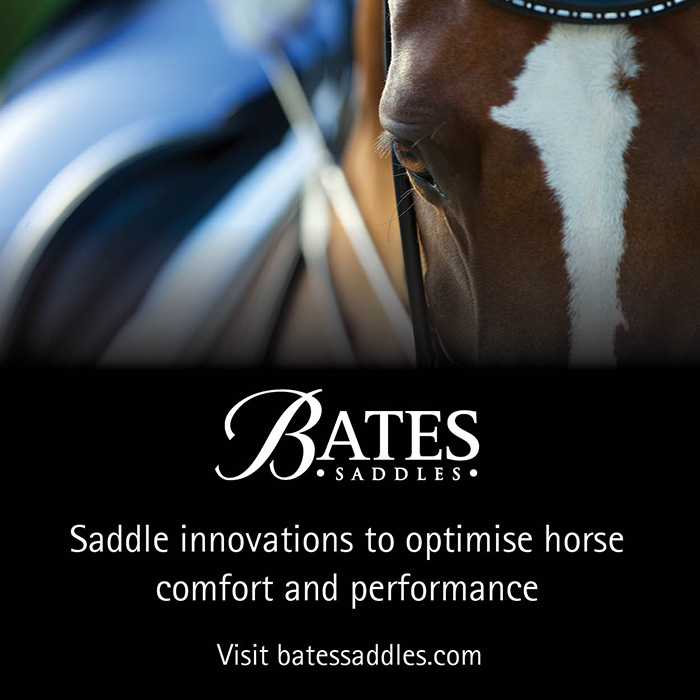
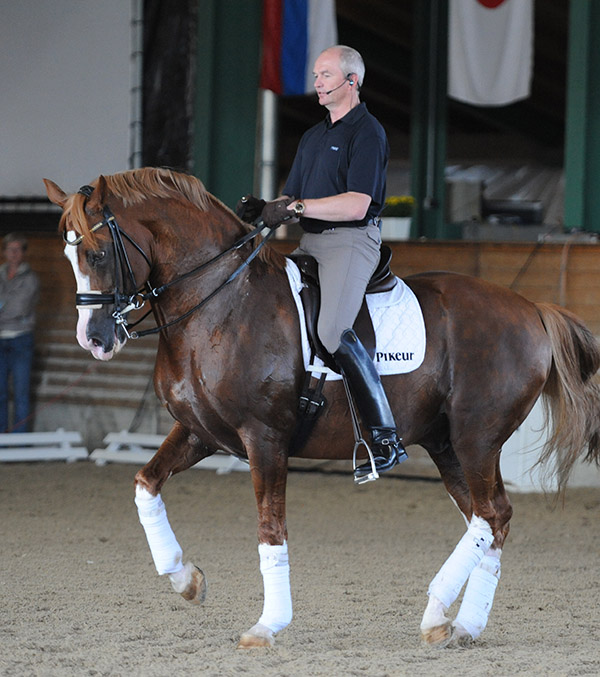
Hubertus is demonstrating how he prepares the horse for the transition to passage / piaffe from walk riding through the short side: “I walk very quiet, it is good for the judges to see the relaxed walk, then I wake him up a little in the corner, so he is ready for the passage, then coming to the piaffe, a little tick, tick with the spur, sit quiet and come to piaffe…”
This demonstration was conducted by Hubertus Schmidt at the 2009 Bundeschampionate Seminar in Warendorf…
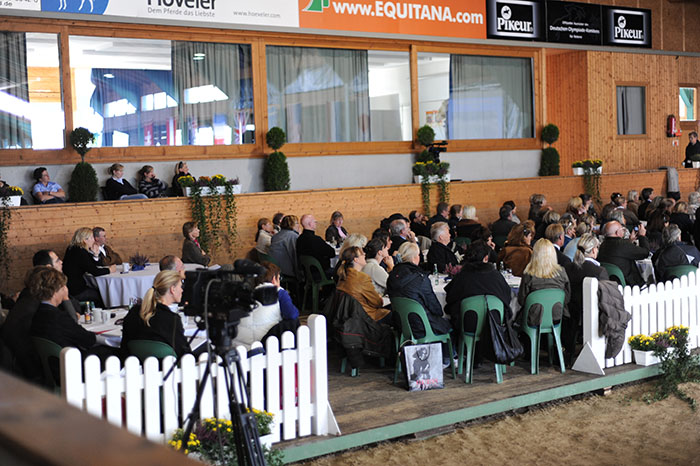
Want to breed your own dressage star? Check out the amazing range of frozen semen available from International Horse Breeders
